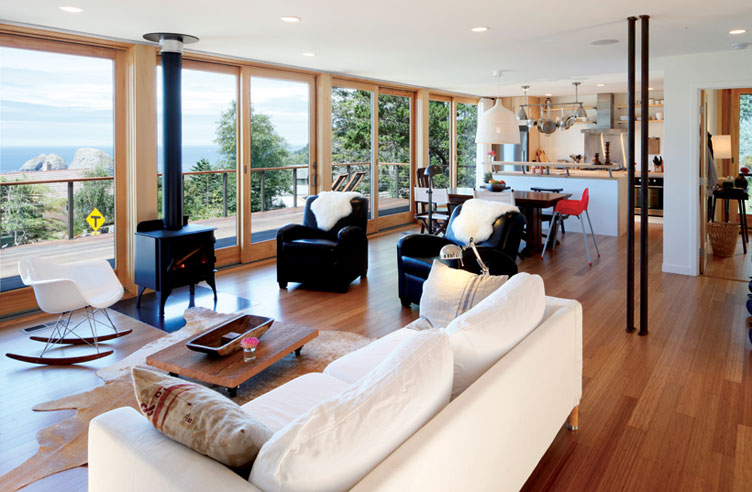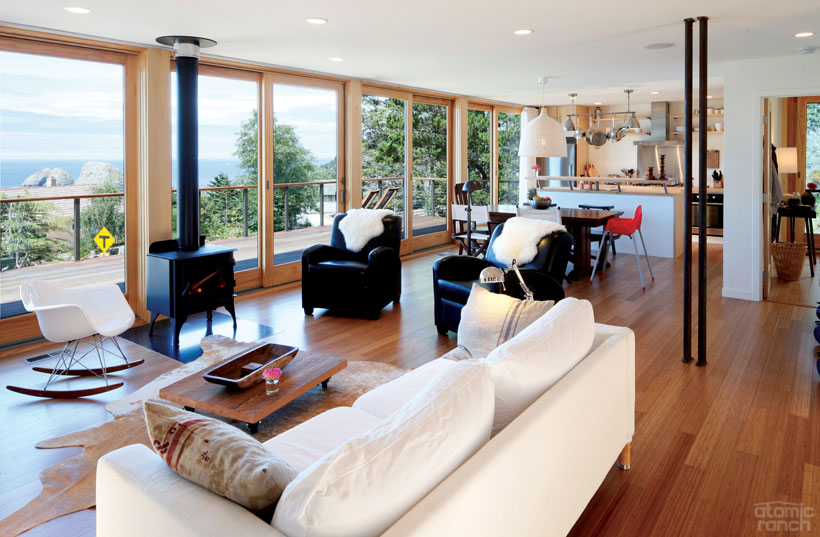
Ted and Nicole Helprin were in the market for a second home on the Oregon coast when they decided on a 1,400-square-foot prefab from Alchemy Architects in St. Paul, Minnesota. The weeHouse, as the line is known, fit their sensibilities, and the idea of having it built quickly indoors, out of the elements, was very appealing.
“We both loved the idea of prefab, and Alchemy’s vision and design background and aesthetic were very important,” says Nicole, a communications director for a large technology firm. “We heard prefab was cheaper, faster and better designed, but that’s not why we chose it. I was pregnant with our second child and wanted something without a thousand options but still custom. I was afraid I wouldn’t be able to create something I liked [as much as this] if we just went out on our own with an architect.”
The couple flew to San Francisco to kick the tires on an actual weeHouse at a conference there and liked what they saw. The heavily treed lot that they found in the small town of Oceanside had a 15’ height limitation on structures, so the almost flat roof, ranch-style module was a good fit for the site.
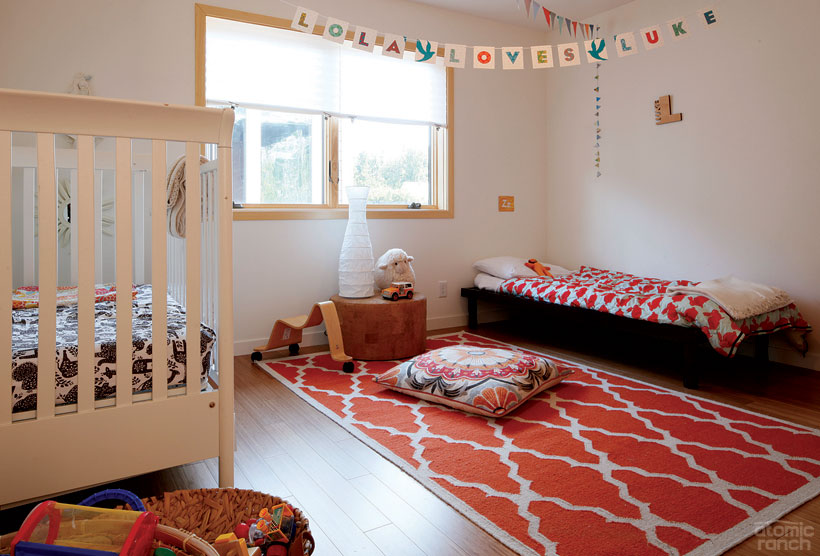
“It was really important to us to build a house that could withstand the weather,” Ted says, a marketing executive who was laid off in the 2009 downturn. “A lot of people locally tried to dissuade us from doing
prefab because it’s new and they weren’t sure if it would work. We’re in a 100-mile-an-hour wind zone, plus it’s an earthquake zone and the salt water here is famous for flying uphill—it’s not just rain coming down. A local builder said there’s just no way people in some manufactured home facility, or Minnesota architects, could design something that would withstand the rigors of the Oregon coast.”
The weeHouse modules are 14’ wide, and the couple looked at L-shaped conformations before settling on two 50’ long units oriented face to face with an extensive window wall facing the ocean view. The open plan living/
dining/kitchen and the kids’ bedroom make up the front module, while the rear one comprises a master bedroom and bath, a back entry hall, a third bedroom and second full bath.
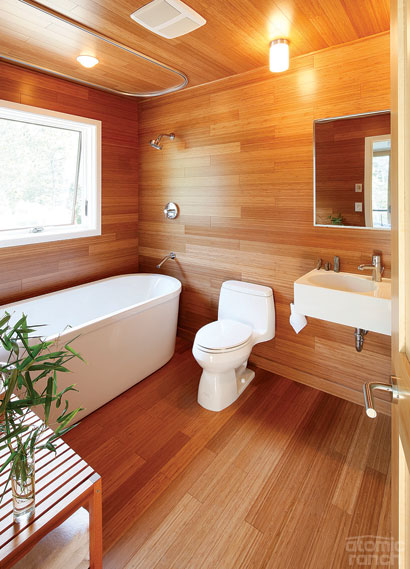
Despite local naysayers, of which there were plenty, the Helprins signed a contract in September 2007 for a projected delivery date of April to May 2008. A construction loan was arranged through a Minnesota lender that had financed other weeHouses, and the back and forth design process wrapped up in December. Nicole entertained fantasies of spending her maternity leave furnishing the house.
The Alchemy website contrasts their six- to nine-month process to a year or longer timeline for a stick-built custom home, and they position their smaller, quality-conscious homes as better for the planet and an antidote to supersized housing. Based on local advice, Ted worked extensively with Alchemy on custom exterior treatments that would best address the weather concerns, and a factory in California was selected to do the fabrication.
For eight months, the construction site sat with just a foundation and a Porta-Potty to impress the neighbors. The projected May delivery slipped to July, then September. Forbidden to contact the fabricator directly, the Helprins were told that Oregon building inspectors, who had to fly down to California to sign off on electrical and plumbing, were holding up the process. In reality, at the framing and rough-in plumbing stage, their house had drawn to a screeching halt and the builder was going out of business.
“I went from dream client to Whaaaat!!!!!” says Nicole. Cooler heads (Ted) were called in to negotiate with
Alchemy on where to go from here, as Nicole was too distraught to deal with it.
“My goal in life is to accurately set the expectations of the various stakeholders of the projects I’m working on, even if that means bringing bad news,” Ted says. “I told Alchemy, ‘You know how upset you are with the factory? That’s how upset we are with you.’ But we wanted to keep it in perspective and not burn bridges.”
Meanwhile, at every hiccough in the schedule, the Helprins’ contractor would offer to build them the same
house for less money. But they were skeptical.
“Contractors out here are pretty provincial,” Ted says. “They don’t read Dwell. Ours said [about the design], ‘It’s a double wide.’ But ultimately, Alchemy really stepped up; they made it right at great expense [to themselves].”
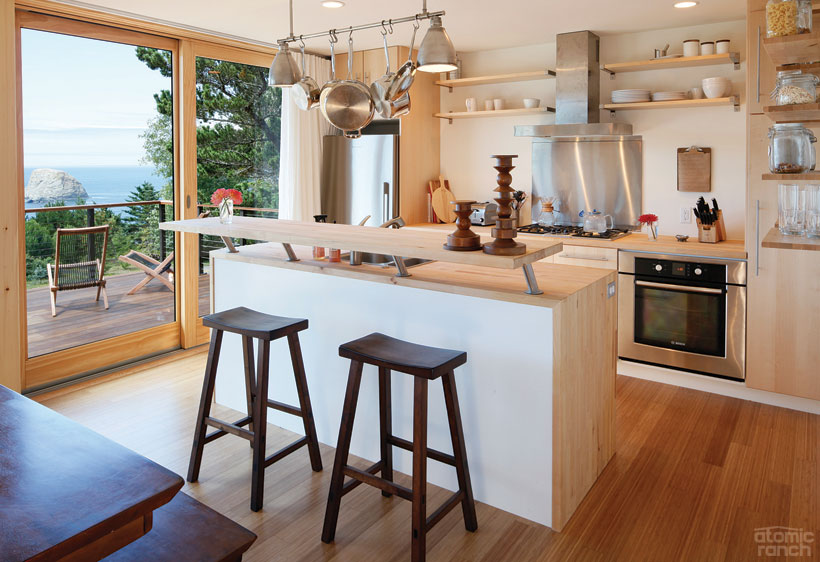
Another manufacturer was found, Stratford Building Corp. in Idaho, and in seven weeks they delivered a semifinished home. Some expectations had to be adjusted, though. The first builder was to have included siding and paint, while the Stratford bid did not, increasing the punch list for the local contractor. Options for the bamboo flooring and wall panels changed, roof overhangs were added and the couple rethought their custom kitchen cabinetry selection. But they were back in business.
In February 2009, almost a year and a half after jumping on the prefab bandwagon, the Helprins’ weeHouse arrived. “A 40-ton crane lifted it up through howling wind and rain, and a corner of the protective plastic caught the wind like a spinnaker,” Ted recalls. “Eight guys were hanging on to ropes, trying to keep the house from swinging into the neighbors’ house or the trees. It was blimp wrangling.”
For all of their concerns about building in a controlled environment, the house sat out in the elements while the rain screen siding, exterior paint, overhangs and gutters were finished off. There was also a Holy Crap! moment when the contractor realized the electrical and plumbing hookups were in the wrong corner of the house and would need to be moved.
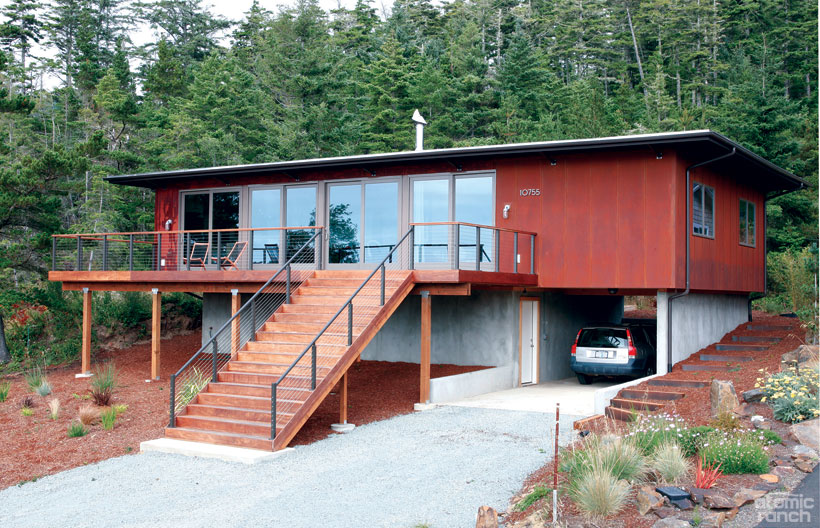
Would they do it all again, knowing what they know now? “When design blogs feature prefab, it seems attainable and you just think how cool it is,” Nicole says. “But, there is a huge population of people who are disappointed in prefab—it’s too expensive—and they don’t even know the true costs.”
She does think that weeHouse owners have a lot they could offer Alchemy. “They probably don’t know that the fridge hits the window [in our design] and there are little things that could be further tweaked. If they’re repeating design ideas, they should be desperately harvesting feedback,” she says.
“Overall I love the house and liked working with Alchemy. There were times when I was frustrated, but in the end, they came through and delivered what they promised. I got the house that I wanted, but it took a little bit longer and it cost a little bit more; but I think those issues would have come up with a site-built house as well.”
“People have this idea of prefab as these beautiful, little modern homes that are designed within an inch of their lives a thousand times over,” Ted adds. “But every single one is different and they’re figuring out things as they go. Our goal was not to build the cheapest house we could; if that’s your goal, don’t do prefab.
“For ease, speed and quality design we knew we’d have to spend a little more,” he continues. “At the end of the day, we got quality design; it wasn’t particularly easy, but the design part was fun. The speed is where it really fell flat. The idea of doing site work as the modules are being built in the factory is a best-case scenario. We saw that work, eventually, but it didn’t work the first time. That wasn’t Alchemy’s fault and it wasn’t prefab’s fault; it was the exact same thing that’s been happening to builders all over America.
“But we love the home and, frankly, Alchemy treated us really well.”

